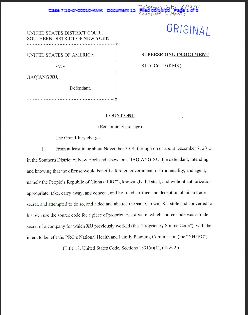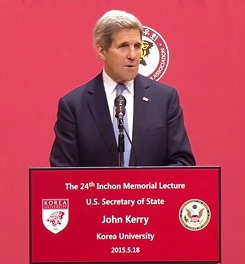It started late in October, when computer networks at the White House were breached by an outside group, causing disruptions throughout the entire system. Since then a number of agencies, including the U.S. Postal Service and the National Weather Service, have reported attacks. Then, this past Sunday, the State Department took the unprecedented step of shutting down its entire unclassified email system as technicians repair possible damage from a suspected hacker attack. Voice of America News (VOA) reports that the White House computer systems are among the most highly fortified in the world, and begs the question: who was behind these successful and brazen attacks? China? Russia? Political hacktivists? Or independent highly skilled hackers with their own agenda?
The White House hack is raising alarm that one of the most serious threats to online security may not be coming from China, but from Russia, reports Voice of America. According to Darren Hayes, the director of cyber-security at Pace University who is cited in the VOA article, the Russians are a lot more sophisticated in terms of state-sponsored attacks than the Chinese. VOA also cites Jeffrey Carr, who wrote the book Inside Cyber Warfare:
The threat from China is overinflated, (and) the threat from Russia is underestimated. Russia certainly has been more active than any other country in terms of combining cyber-attacks, or cyber-operations, with physical operations. . . . And nobody else has ever done that – China has never done anything like that.
Nonetheless, articles by major networks continue to point the finger in different directions. The Washington Post reported that Chinese hackers were behind the NOAA attack. The National Post reported that Chinese hackers were suspected of hacking the U.S. Postal Service. Both Russia and China deny involvement in these attacks. So how are these sources being attributed?
According to the VOA article, each country develops their own style of language coding. However, Kurt Baumgartner, the Principal Security Researcher at the web-security firm Kaspersky Lab, told VOA:
[S]ource attribution is practically impossible as cybercriminals have been known to use various techniques to keep themselves hidden, using different languages from their own in their code or work, constantly changing locations or working with a large organization of criminals. . . .Functionality found in malware or techniques can be misleading. It cannot be relied on to speculate that a specific campaign was operated out of one part of the world or another – analysis and identifying the source is much more complex than that. . . .Viruses don’t carry ID cards.
Not only that, but Hayes reported to VOA that another tactic is for governments to use non-governmental groups to give the government plausible deniability for involvement. The VOA article specifically noted that the Russian government is not afraid to use young hacker groups, but that does not isolate them as the only country willing to use this tactic.
So what does the United States need to accomplish to prevent future breaches on government systems? According to the VOA article, the U.S. needs to clearly define what cyber-warfare is, attribute it to various nations, and discuss repercussions for theft of intellectual property or money or just destructive attacks. In order to do that, the U.S. needs to find accurate ways to attribute attacks to sources. For the full VOA article, click here.






Leave a Reply